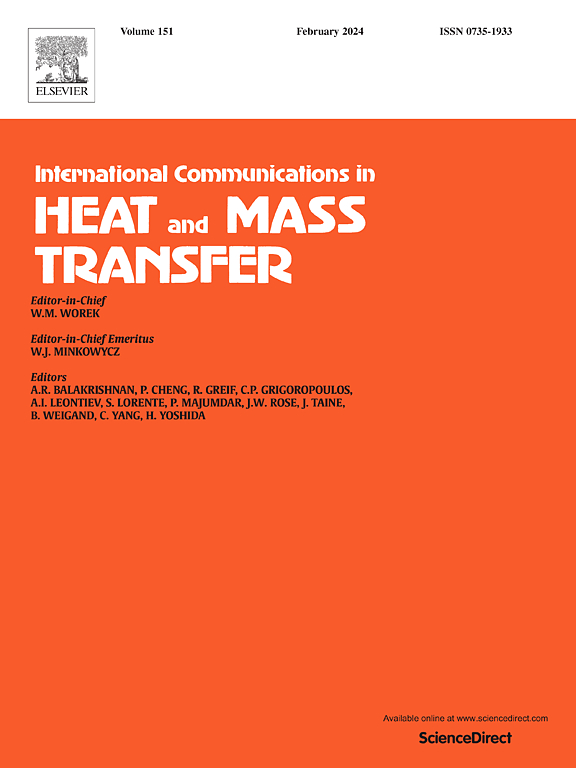Temperature distribution and freezing range of a railway tunnel in cold regions under high-speed train piston effect
IF 6.4
2区 工程技术
Q1 MECHANICS
International Communications in Heat and Mass Transfer
Pub Date : 2025-07-23
DOI:10.1016/j.icheatmasstransfer.2025.109400
引用次数: 0
Abstract
High-speed train piston effect redistributes the temperature field and increases the frost damage of tunnel in cold regions. To reveal the temperature distribution and freezing range of a tunnel in cold regions under train piston effect, field monitoring and simulation studies are conducted. The results indicate that piston effect causes the air pressure in tunnel to fluctuate violently, and creates a pressure difference between train head and train tail. As a high-speed train enters tunnel, air in front of train head is pushed toward the tunnel exit, while air outside the tunnel is drawn into the tunnel, and flows toward the low-pressure zone behind train tail. Under the influence of piston effect, the tunnel temperature decreases, the freezing length increases from 1462 to 1605 m, and the freezing depth is also amplified. The maximum and minimum freezing depths occur at tunnel entrance and tunnel exit, respectively. The most significant effect is located at the tunnel side wall close to train. Air temperature at the tunnel site, train speed and train formation length have significant influence on the freezing range. Both the freezing length and freezing depth increase with lower air temperature, higher train speed and longer train formation.
高速列车活塞效应下寒冷地区铁路隧道温度分布及冻结范围
高速列车活塞效应对寒冷地区隧道的温度场进行了重新分配,增加了隧道的冻损。为揭示列车活塞作用下寒冷地区隧道的温度分布和冻结范围,进行了现场监测和模拟研究。结果表明:活塞效应导致隧道内气压剧烈波动,在车头和车尾之间产生压力差;高速列车进入隧道时,车头前方的空气被推向隧道出口,而隧道外的空气被吸入隧道内,流向列车尾部后方的低压区。在活塞效应的影响下,隧道温度降低,冻结长度从1462 m增加到1605 m,冻结深度也被放大。最大冻结深度和最小冻结深度分别出现在隧道入口和隧道出口。影响最显著的是靠近列车的隧道侧壁。隧道现场气温、列车速度和列车队长对冻结范围有显著影响。冻结长度和冻结深度随气温的降低、列车速度的提高和列车队形的延长而增加。
本文章由计算机程序翻译,如有差异,请以英文原文为准。
求助全文
约1分钟内获得全文
求助全文
来源期刊
CiteScore
11.00
自引率
10.00%
发文量
648
审稿时长
32 days
期刊介绍:
International Communications in Heat and Mass Transfer serves as a world forum for the rapid dissemination of new ideas, new measurement techniques, preliminary findings of ongoing investigations, discussions, and criticisms in the field of heat and mass transfer. Two types of manuscript will be considered for publication: communications (short reports of new work or discussions of work which has already been published) and summaries (abstracts of reports, theses or manuscripts which are too long for publication in full). Together with its companion publication, International Journal of Heat and Mass Transfer, with which it shares the same Board of Editors, this journal is read by research workers and engineers throughout the world.

 求助内容:
求助内容: 应助结果提醒方式:
应助结果提醒方式:


